Key takeaways:
- Writer’s block often stems from emotional issues like perfectionism and fear of failure, rather than just a lack of ideas.
- Identifying personal triggers, such as stress and isolation, helped manage and reduce creative paralysis.
- Establishing a consistent writing routine and environment fosters creativity and helps prevent blocks.
- Celebrating small victories boosts confidence and creates a more positive writing atmosphere.

Understanding Writer’s Block
Writer’s block can often feel like an insurmountable wall between you and your creativity. I remember staring at a blank screen, filled with frustration and self-doubt, wondering if I would ever write again. It’s like being trapped in a mental fog, where words seem to dissolve before they can even take shape.
At its core, writer’s block is not just a lack of ideas; it’s often tied to deeper emotional states like fear of failure or perfectionism. Have you ever felt this pressure to produce something extraordinary, only to freeze up when faced with the blank page? I’ve been there, where the thought of not meeting my own expectations was paralyzing, and simply brainstorming felt overwhelming.
Understanding that writer’s block is a common plight among writers can be comforting. It reminds us that we’re not alone in our struggles. In moments of stillness, I’ve found clarity—sometimes forcing myself to step away and just breathe helps. It’s through those quiet moments that I often discover new angles and perspectives on my work.
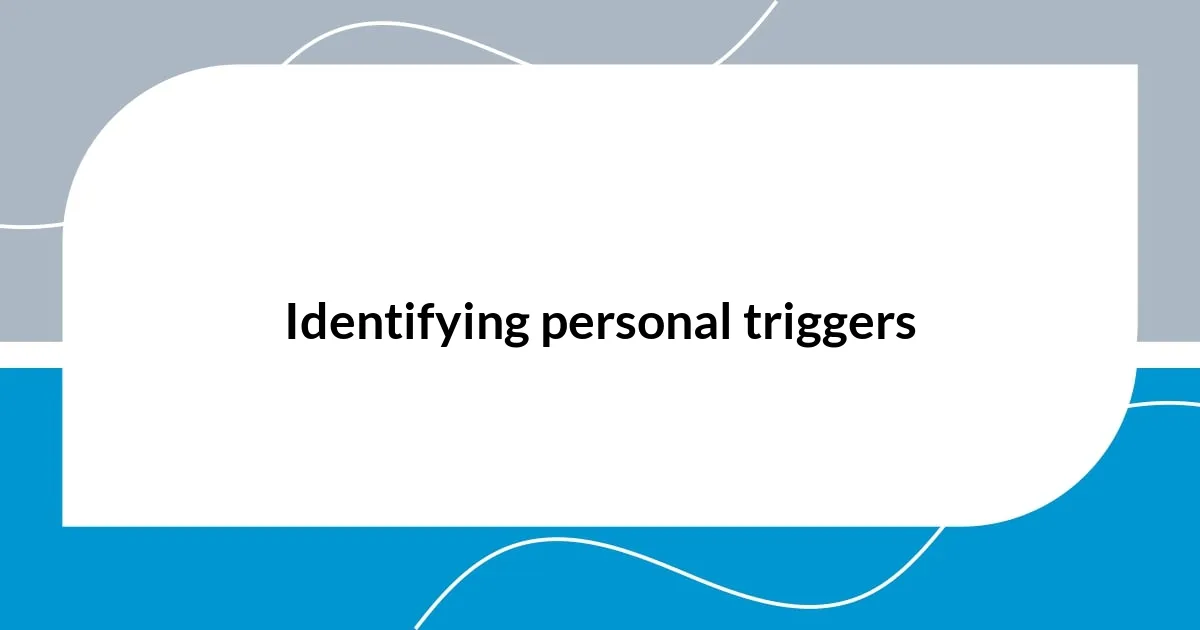
Identifying Personal Triggers
Identifying my personal triggers was a significant step in overcoming writer’s block. I found it helpful to acknowledge the specific situations and feelings that contributed to my creative paralysis. For instance, I realized that late nights often led to an avalanche of self-doubt; the quiet of midnight amplified my fears about my writing capabilities. Once I recognized these patterns, I could proactively manage them.
Here are some common triggers I’ve identified, which might resonate with you:
- Stress from daily life: When my workload increased or personal issues arose, my creativity would take a backseat.
- Perfectionism: Striving for an unattainable ideal made me question the value of my ideas, leading to a complete mental shutdown.
- Isolation: Spending too much time alone without feedback created an emotional disconnect from my writing.
- Criticism: External opinions, whether spoken or simply imagined, often spurred debilitating self-judgment.
- Change of environment: Sometimes, just being in a cluttered or uncomfortable space stifled my creativity.
Recognizing these triggers gave me a sense of control, which in turn reduced the pressure I felt when writing. When facing a block, I would go through my list and pinpoint what might be affecting my flow, allowing me to address those emotional currents head-on.
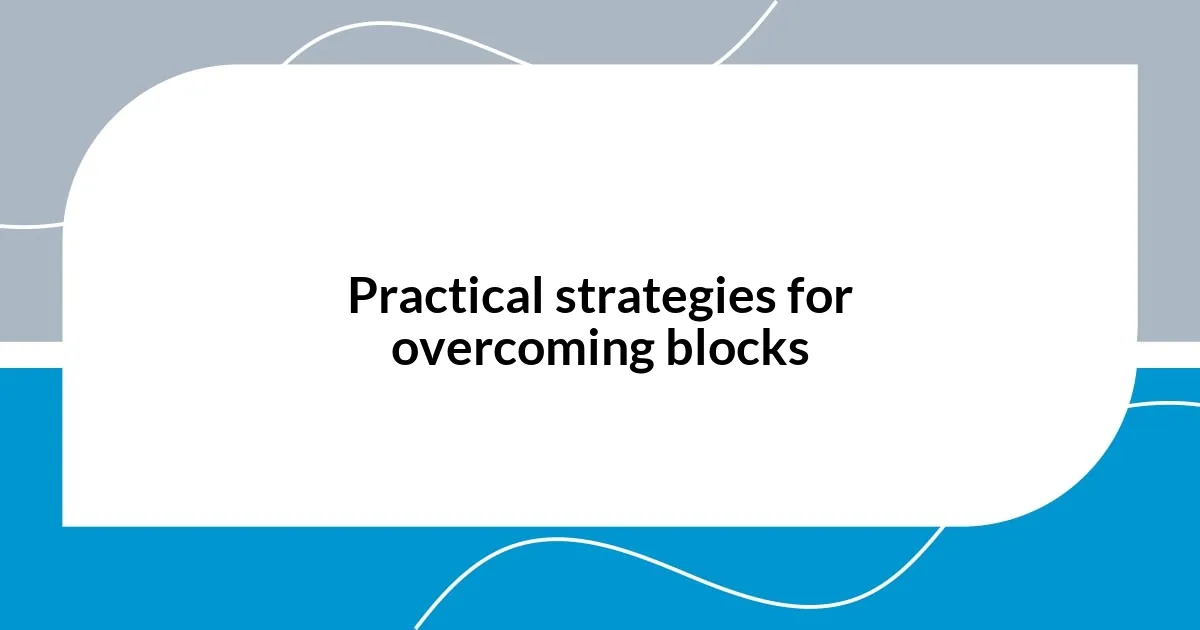
Establishing a Writing Routine
Establishing a writing routine can be a game-changer for overcoming writer’s block. I’ve found that consistency breeds creativity. For instance, I started dedicating the first hour of my day solely to writing. This simple act transformed my approach; my mind became trained to churn out ideas during that time, like clockwork. How about you? Have you ever noticed how habit can unlock your creative flow?
One thing I’ve learned is that the environment you choose for writing can significantly influence your routine. Initially, I attempted to write at my cluttered desk, surrounded by distractions. But it wasn’t until I carved out a cozy nook at home, filled with plants and soft lighting, that my creativity blossomed. The change was almost instant! It’s like my brain shifted into a creative gear just by being in a space that felt inspiring.
To solidify my routine, I also began incorporating small rituals. For example, brewing a cup of tea before each session became a comforting prelude to my writing. I’ll often take a few deep breaths while waiting for the kettle to boil, grounding myself and preparing my mind for the task ahead. These little moments create a rhythm that my mind starts to associate with writing, helping me fend off the block before it even begins.
| Aspect | My Experience |
|---|---|
| Writing Environment | Cozy nook filled with plants fostered creativity. |
| Time of Day | Early mornings worked best for consistent flow. |
| Pre-Writing Ritual | Brewing tea created a comforting lead-in to writing. |
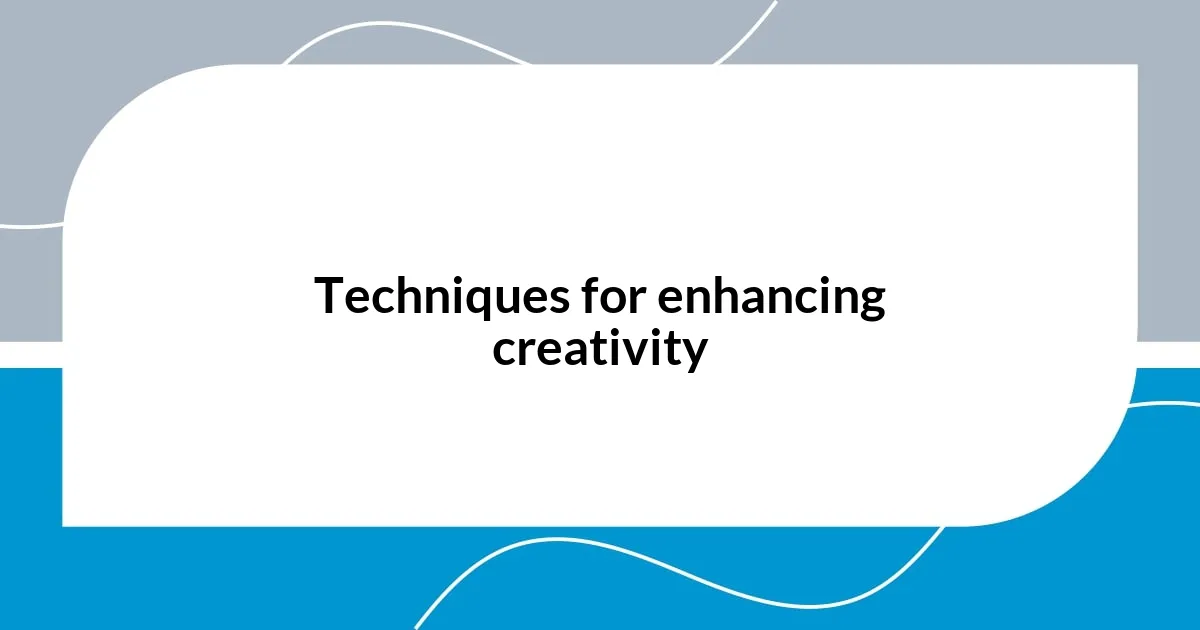
Utilizing Creative Exercises
Creative exercises have been a lifeline for me when writer’s block loomed large. One technique I’ve come to cherish is freewriting, where I set a timer for ten minutes and let my thoughts spill onto the page without worrying about grammar or structure. I can’t stress how freeing this feels—like a mental purge that clears the cobwebs. Have you ever tried simply letting your mind roam? It’s surprising what gems can surface when there’s no pressure to be perfect.
Another fun exercise I’ve incorporated is the “word association” game. I write down a random word and let my imagination connect it to others. For example, I once started with “ocean,” which spiraled into thoughts of waves, vacation memories, and even childhood dreams of sailing. This playful approach not only rekindles my creativity but also helps me tap into emotions I hadn’t considered. I encourage you to give it a go—what unexpected pathways could your mind uncover?
Sometimes, I also use prompts to spark my creativity. I recall a particularly productive day when I stumbled upon a prompt about “what lies beneath the surface.” It pushed me to explore my feelings, fears, and desires more deeply, ultimately resulting in a powerful piece of writing. Have you encountered a prompt that resonated with you? Finding ways to connect emotionally with your writing can transform not just your work but also how you feel about it.
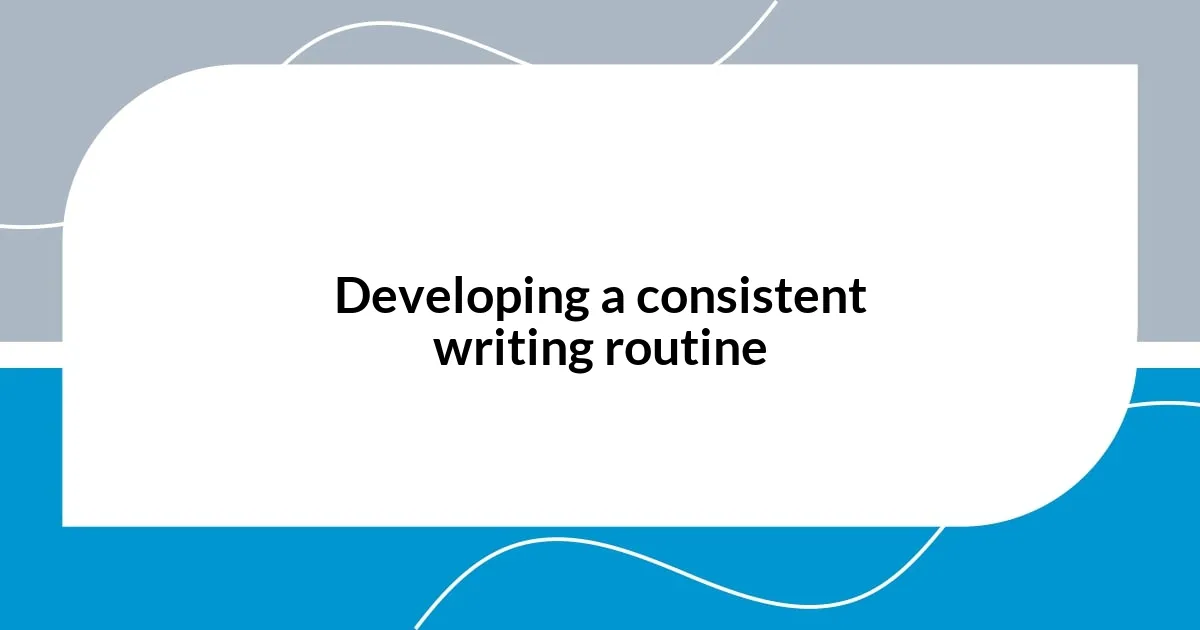
Seeking Inspiration from Others
Sometimes, I find that seeking inspiration from others can be a breath of fresh air for my writing. I often turn to books or articles by writers I admire. For instance, I recently read a novel by my favorite author, and I felt the spark of creativity ignite within me. Their unique style and emotional depth stirred something inside, reminding me that storytelling is an art form that transcends time and experience.
Workshops and writing groups have also proven invaluable in my journey. I vividly recall a particularly invigorating session where we shared our works-in-progress. Listening to others’ ideas and struggles made me realize I’m not alone; we all wrestle with doubts. It really hit home when a fellow writer shared their method for capturing everyday moments in their prose. That insight resonated with me, as I realized even the mundane can be a source of inspiration.
Engaging with different art forms enriches my creative process too. One evening, after watching an evocative film, I felt compelled to jot down my thoughts and feelings afterward. The emotional arcs I observed sparked new story ideas that felt authentic and alive. Have you ever experienced a moment where another’s artistry made you reflect on your work? It’s fascinating how inspiration can seep into your writing from unexpected places, urging you to create anew.
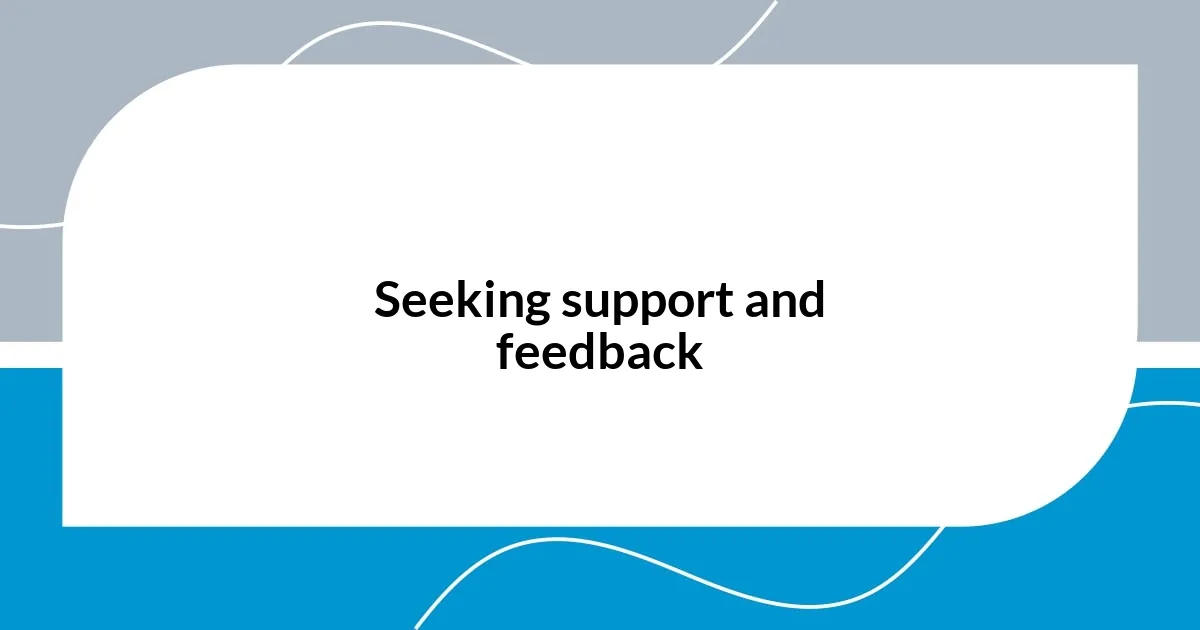
Setting Achievable Writing Goals
Setting realistic writing goals has been a transformative part of my creative journey. Initially, I used to set overly ambitious targets, only to become frustrated when I couldn’t meet them. Now, I break my writing projects into smaller, manageable tasks. For instance, rather than saying “I will write a chapter today,” I might aim for just 500 words. It feels more attainable, doesn’t it?
I remember a time when I felt overwhelmed by a looming deadline, which was paralyzing. To tackle this, I created daily goals tied to specific times of day. I’d commit to writing for just 30 minutes each morning before my day got too busy. That small commitment not only eased my anxiety, but it also allowed me to see tangible progress. Have you found that timing plays a role in your productivity?
Another effective strategy I adopted is tracking my progress visually. I utilize a simple chart where I mark each goal I’ve achieved. This not only motivates me but also builds a sense of accomplishment as I see the little boxes getting ticked off. I find that this visualization turns writing into a game of sorts, encouraging me to keep pushing forward. What methods have you found that keep your writing goals in check?
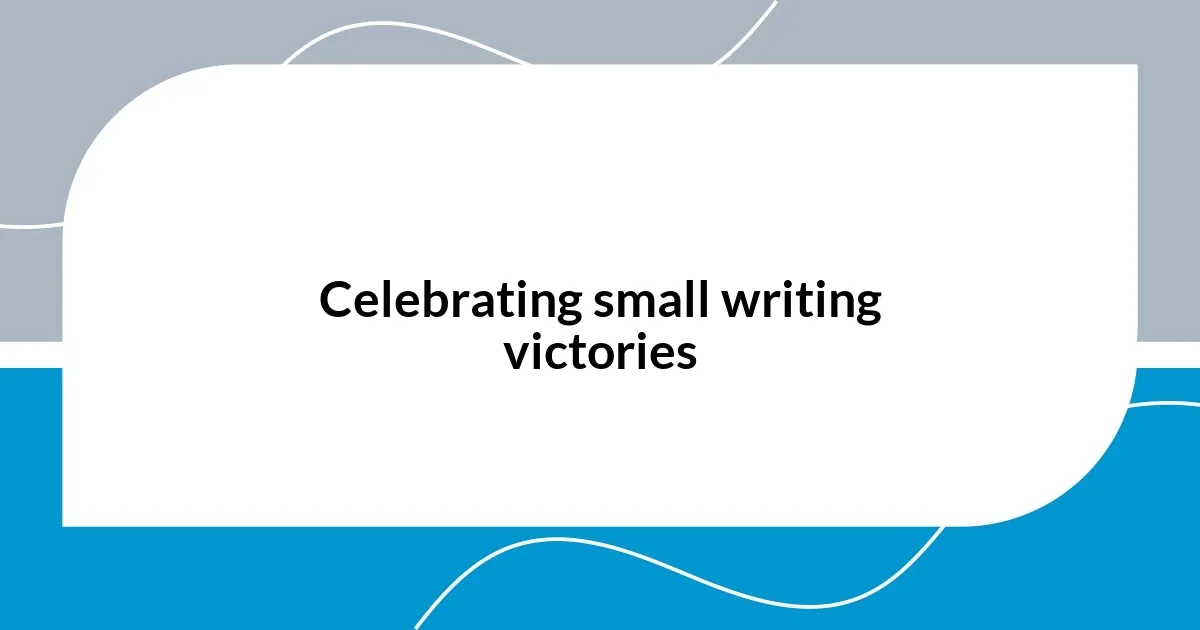
Celebrating Small Victories
Celebrating small victories can shift our mindset in powerful ways. I distinctly remember the first time I completed a single paragraph that felt just right. It was like a wave of relief washed over me, a small victory that reminded me how progress, no matter how minor, still counts. Have you ever felt that rush of joy from a seemingly trivial achievement? It’s these moments that build our confidence and propel us forward.
When I started to acknowledge these small wins, I noticed a remarkable change in my writing energy. Each time I completed a task, be it finishing a page or refining a character’s backstory, I treated it as a personal celebration. I would even reward myself with a favorite snack or a brief walk outside to let the inspiration swirl around in my mind. It may sound simple, but wouldn’t you agree that these tiny rituals amplify the joy of writing?
I also try to share these victories with my fellow writers. I remember one day, I posted about my modest progress on social media, celebrating a completed draft of an article. The outpouring of positive responses made me feel connected and appreciated, reinforcing the idea that every little step matters. Isn’t it amazing how we can inspire each other when we shine light on our small triumphs? These shared moments not only lift our spirits but also create a supportive community that fuels our passion for the craft.